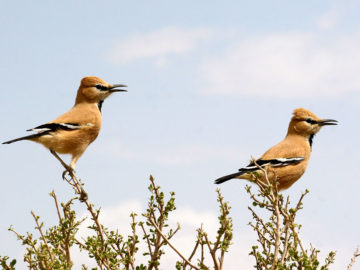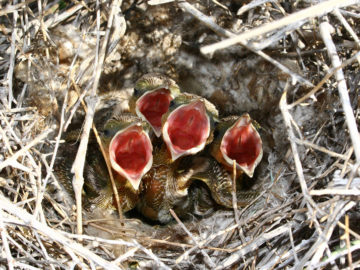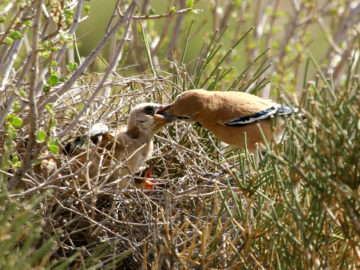
Pleske’s Ground Jay
Photo by Shahab Cheraghi
Pleske’s ground jay, whose scientific name is Podoces pleskei, is from the family of corvidae. In 1896 and for the first time, it was identified and introduced as an endemic species to Iran. Pleske’s ground jay can be observed in the borders of Afghanistan and Pakistan too, but it is mostly visited in Iran especially in its central and eastern regions.
Pleske’s ground jay is mostly inhabiting in relatively flat desert regions and sandy hills, their body color is buff-brown. The length of a mature Pleske’s ground jay is around 25 centimeters and it has wide wings as well. There is a black triangle spot on its head which continues from its eyes up to the side of its beak, there is also a black spot on its throat. It has a long beak which is a little bended down, this form of beak helps Pleske’s ground jay to dig and search the ground.

Pleske’s Ground Jay
Photo by Shahab Cheraghi
They fly in a low altitude and short distance, even while they are approaching to the ground to land on, they run for a long distance. These birds prefer running to flying and once they feel any danger, they start running fast and in a zigzag form. Their laying occurs during winter and usually they lay 4 eggs.
Pleske’s ground jay is a monogamous bird which mate for life. It is not afraid of humans but always observes its distance with them.



